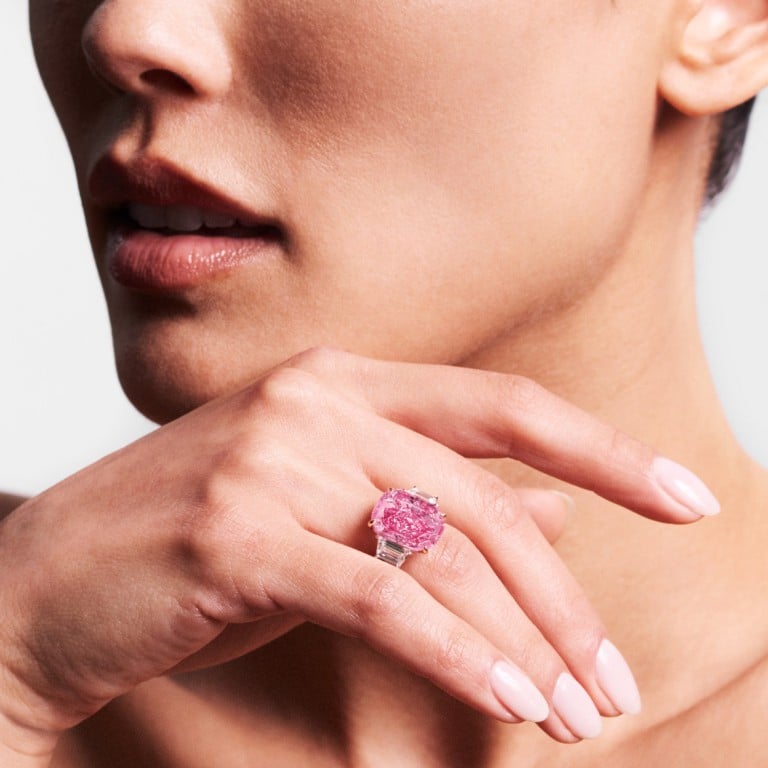What makes pink diamonds special and where do they come from? Most are dug from a single mine in Australia … which just closed – no wonder celebs from Blake Lively to Lady Eliza Spencer are fans

- More than 80 per cent of pink diamonds came from the now-shuttered Argyle mine in Australia, with Graff, Hirsh London, David Morris and Boodles the most famous names associated with making them into jewellery
- In June 2023, auction house Sotheby’s sold the Eternal Pink for a record price for a purplish pink diamond while the 13.33-carat Lesotho Pink Diamond was discovered in February 2019
Few gemstones are as lustrous and uniquely saturated as the pink diamond. A wonder of nature, pink diamonds were first discovered in India during the early 17th century in the legendary Kollur mine, one of the largest and most productive diamond mines on the Indian subcontinent during the 16th to mid-19th centuries.
A French merchant and adventurer called Jean-Baptiste Tavernier was the first to reference pink diamonds, describing in his travel notes a large pink rough diamond of over 200 carats, shown to him by Moghuls in the Kingdom of Golconda in 1642. This diamond, named The Grand Table, was valued at 600,000 rupees at the time, and is still considered to have been the largest pink diamond found to date.

Since then, pink diamonds have soared in popularity, and, as a result, have also been mined in South Africa, Brazil, Canada, Tanzania, Russia and Australia. More than 80 per cent of the world’s pink diamonds originated from the Argyle mine in the Kimberley region of Western Australia up to its closure in 2020, with around 0.1 per cent of the mine’s 20 million carat annual output classified as pink diamonds.
“Natural pink diamonds are found in a variety of different shades from soft pinks, to purplish-pinks, to violets and even extremely rare red diamonds,” explains Sophia Hirsh, managing director of British jeweller Hirsh London. Founded by her parents-in-law Anthony and Diane in 1980, Hirsh is one of many contemporary brands propelling the pink diamond into exciting new territory. “We love creating jewellery with these incredible gems as they are so complimentary to any skin tone, however, what we love most about pink diamonds is that they are a mystery,” says Hirsh. “Geologists still do not know exactly what makes them pink, although the most accepted theory is that they are formed by geological shifts as opposed to other colour diamonds which are formed by trace elements being introduced during the crystallisation process. This makes them much more of a natural phenomenon than blue or yellow diamonds. Due to the rarity of natural pink diamonds, they are great investment pieces as well as being beautiful.”

Pink diamonds have featured in the brand’s creations since Hirsh’s husband, Jason, and the firm’s founder Anthony Hirsh visited the Argyle Mine in the 1990s on a gem-sourcing trip. “After this trip, we began introducing handmade jewels featuring natural pink diamonds to the global market,” Hirsh explains. Today, a mix of brooches, rings, pendants and earrings set with pink diamonds are peppered throughout Hirsh’s collections, elevated with precious settings and delicate floral motifs.

At David Morris, white diamonds of various cuts have been used to highlight the unique tint of their pink counterpart – a pairing that has been a signature of the maison since its founding in 1962. Just one example is the brand’s Tetris cuff. Taking over three years to craft, the glittering bangle draws inspiration from Brutalist architecture, resulting in a chunky, complex mesh of white gold studded with square and elongated cushion-cut diamonds, interlaced with a smattering of blossom-pink diamonds.